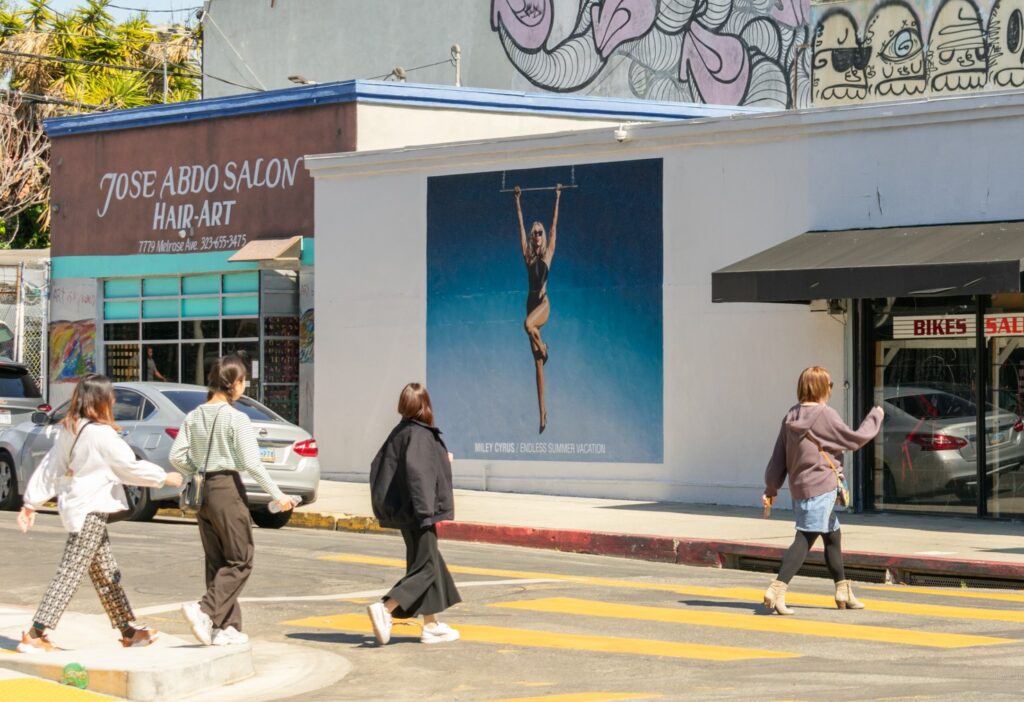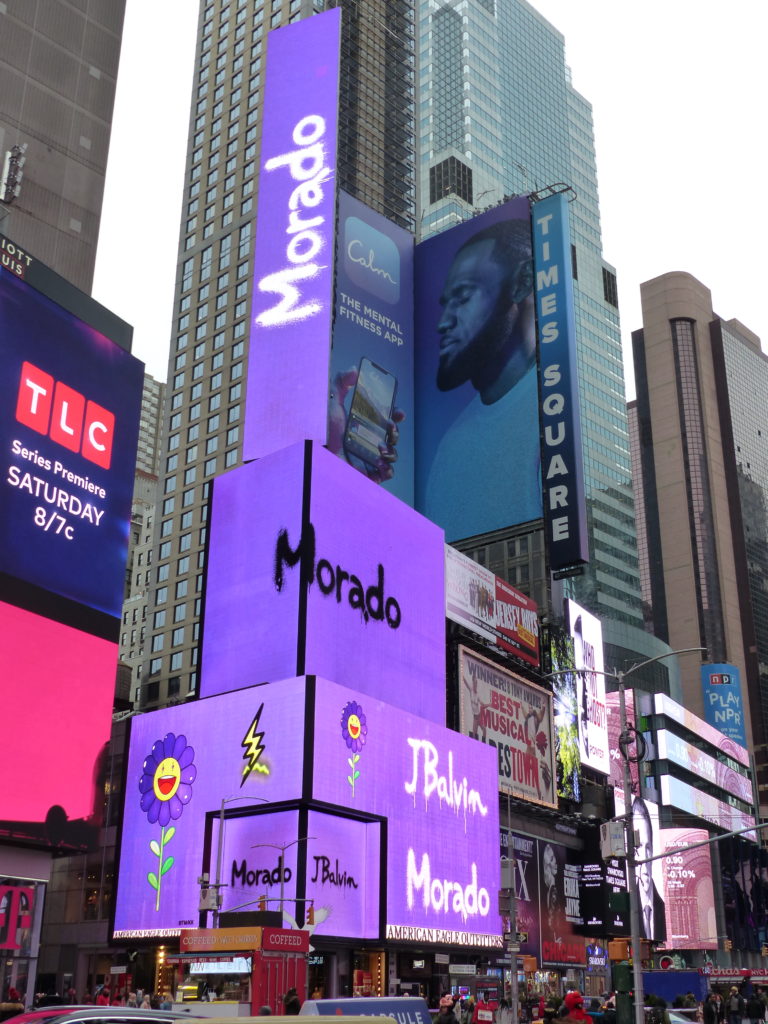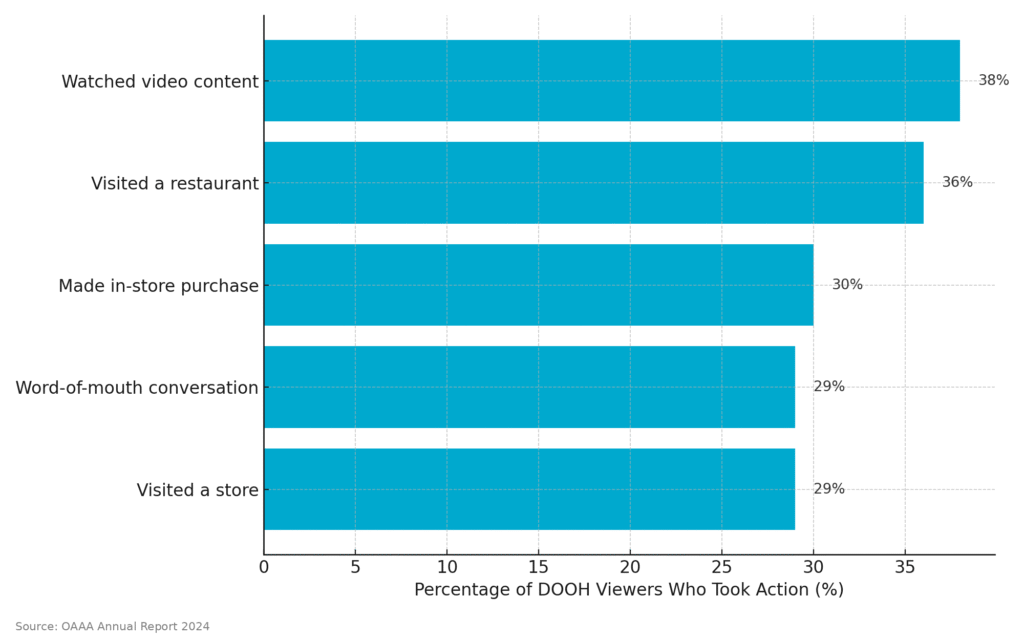Advantages of Outdoor Advertising
Outdoor Advertising, often referred to as Out of Home (OOH) advertising, remains one of the most dynamic and impactful ways to reach local audiences. From billboards and transit posters to digital displays and place-based media, OOH surrounds consumers during their daily journeys and continues to evolve with technology, data, and creativity.
Whether you’re aiming for mass awareness, targeted engagement, or driving online activity, OOH offers unique advantages that few other channels can match.
A Physical Presence in a Digital World
In today’s media environment, where ad fatigue and digital clutter are constant hurdles, OOH stands out with unskippable, always-on visibility. Billboards, wallscapes, and transit signage command attention without needing a click, sound, or screen to be effective.
OOH delivers impressions in environments where people are alert and receptive—on commutes, in shopping districts, and during leisure time. This physicality gives brands the opportunity to create memorable visual impressions.

Outdoor Advertising Drives Digital and Social Amplification
OOH doesn’t just live in the physical world—it increasingly drives online conversations and behaviors. A growing body of research highlights its power to fuel digital engagement:
80% of social media users report frequently seeing OOH ads show up on their feeds—either shared by brands, influencers, or consumers themselves. 48% of users say they’ve taken some form of action after encountering an OOH ad online—such as searching for a brand, visiting a site, or making a purchase.
When paired with hashtags, QR codes, or influencer collaborations, OOH becomes an effective offline-to-online catalyst, enabling brands to connect touchpoints across the customer journey.
Measurable Consumer Response from DOOH
Digital Out of Home (DOOH) formats—like LED billboards, transit screens, and digital kiosks—amplify the impact of traditional OOH with dynamic creative, real-time data triggers, and advanced targeting. Recent findings show that:
- 76% of DOOH ad viewers take action after seeing an ad
- Top responses include:
- Watching video content (38%)
- Visiting a restaurant (36%)
- Making in-store purchases (30%)
- Having word-of-mouth conversations (29%)
- Visiting a store (29%)
These actions are even more pronounced among Gen Z, Millennials, men, and adults in high-transit urban areas, highlighting DOOH’s ability to influence high-value, mobile-savvy audiences.
Out-of-Home Complements Other Media for Greater ROI
OOH works well as part of a larger media strategy. It complements TV, radio, digital, and social by reinforcing brand messages and increasing frequency in the real world. According to multiple cross-channel studies, OOH increases the effectiveness of digital campaigns by improving recall and brand affinity.
Plus, OOH often delivers lower CPMs compared to other premium channels, making it a cost-effective tool to achieve reach and frequency goals.
Hyper-Targeting & Flexibility with Tech Integration
Forever a local medium, today’s OOH campaigns benefit from rich data overlays—including location intelligence, mobility patterns, audience demographics, and behavioral segmentation. This allows for precise planning and strategic placement in areas with the highest index for your audience.
DOOH formats add even more agility, enabling:
- Dayparting (time-based messaging)
- Contextual relevance (weather, events, or traffic triggers)
- Creative versioning and localization at scale
Builds Brand Visibility and Cultural Relevance
OOH is uniquely positioned to create iconic, buzz-worthy moments. Think Times Square takeovers, branded murals, or street-level activations. These formats offer high creative impact, often leading to earned media and viral content.
Brands that integrate OOH into their storytelling often benefit from a halo effect, where real-world presence translates into increased brand trust, recognition, and affinity.

Final Thoughts
Outdoor advertising remains an enduring and evolving force in marketing. Its blend of physical impact, digital synergy, and consumer responsiveness makes it essential for brands seeking visibility, credibility, and engagement at scale.
With newer research showing how OOH influences both online and offline behavior—especially among younger, mobile-first audiences—there’s never been a better time to rethink how this classic medium fits into your modern marketing mix.

ready to discuss your campaign?
FAQs
What is outdoor advertising?
Outdoor advertising, also known as out-of-home advertising (OOH), refers to promotional messages displayed in outdoor locations such as billboards, transit shelters, street furniture, digital screens, and more.
Why is outdoor advertising effective?
Outdoor advertising is effective because it reaches a wide audience, offers high visibility in public spaces, provides constant exposure, enhances brand awareness, and can be strategically placed to target specific demographics or locations.
What are the advantages of outdoor advertising?
Advantages of outdoor advertising include its ability to reach a large and diverse audience, create memorable brand impressions, generate local awareness, reinforce other advertising channels, and deliver messages 24/7.
How does outdoor advertising increase brand awareness?
Outdoor advertising increases brand awareness by placing advertisements in high-traffic areas where they can be seen by a large number of people, creating repeated exposure and familiarity with the brand.
Can Outdoor Advertising reach specific demographics?
| Yes, generally speaking outdoor advertising can be strategically placed to target demographics by selecting locations frequented by the desired audience such as shopping districts, sports venues, transit hubs or near college campuses. |
What types of outdoor advertising formats are available?
Outdoor advertising formats include billboards, transit ads on buses, trains, and taxis, street furniture ads on bus shelters and benches, digital signage, wraps on vehicles, and experiential marketing activations in outdoor spaces.
Is outdoor advertising cost-effective?
Outdoor advertising can be cost-effective because it offers broad reach and long exposure periods, allowing brands to maximize their investment and generate impressions over an extended period of time.
How does outdoor advertising integrate with digital media?
Outdoor advertising can integrate with digital media through the use of digital billboards, interactive displays, QR codes, NFC technology, and location-based targeting, providing a seamless connection between offline and online advertising channels.
What role does creativity play in outdoor advertising?
Creativity plays a crucial role in outdoor advertising as eye-catching and innovative designs can capture attention, spark curiosity, and leave a lasting impression on viewers, enhancing the effectiveness of the campaign.
Can outdoor advertising be measured for effectiveness?
While outdoor advertising metrics can be more challenging to measure compared to digital media, methods such as traffic counts, surveys, geolocation data, and tracking online engagement can provide insights into the effectiveness of outdoor advertising campaigns.





